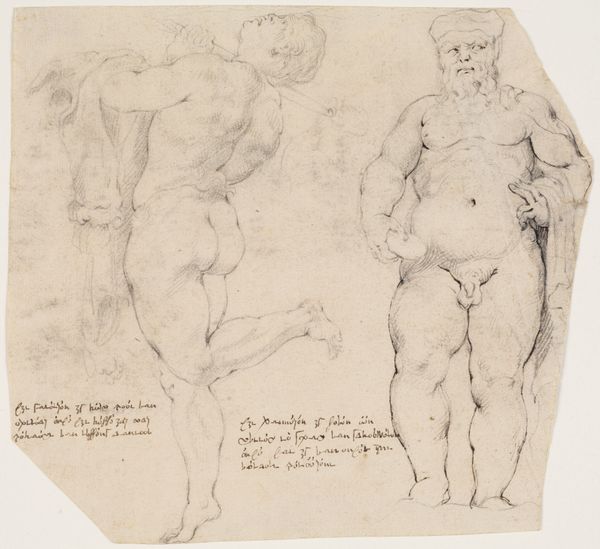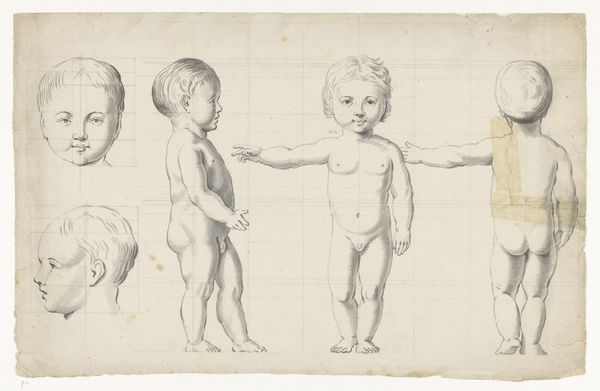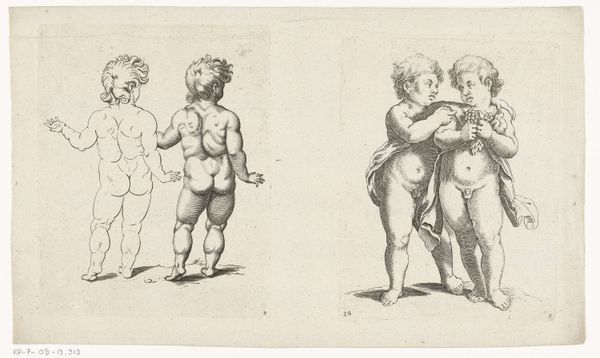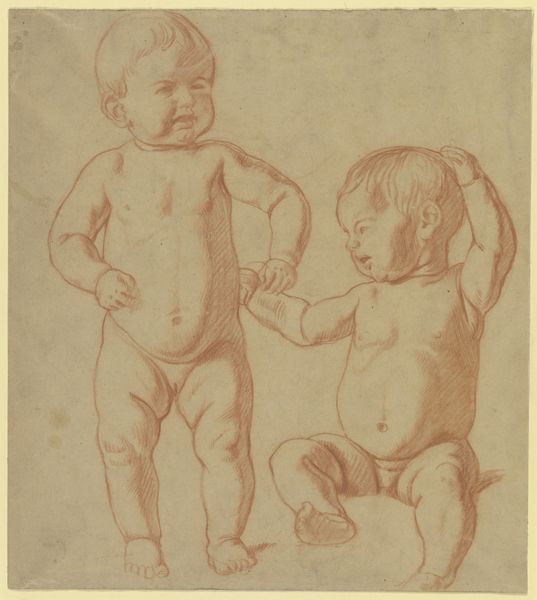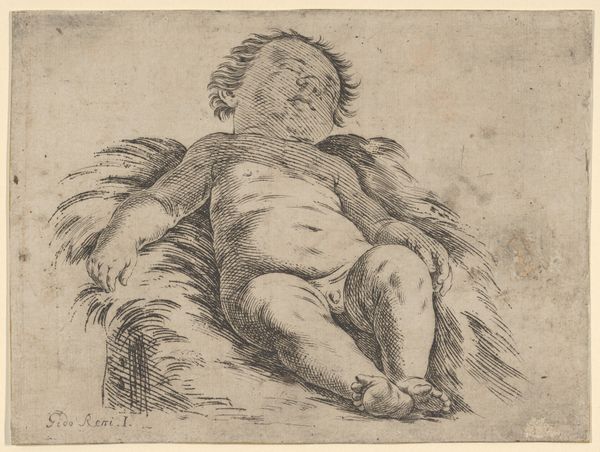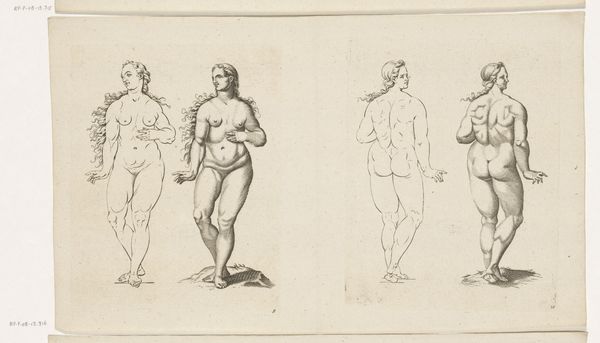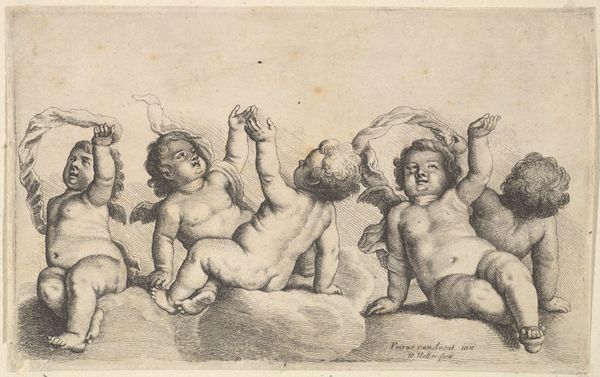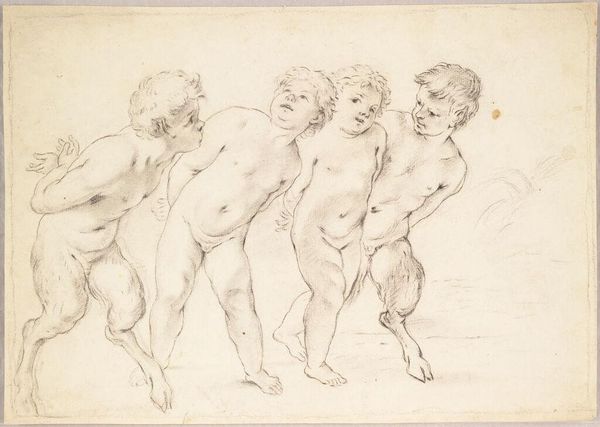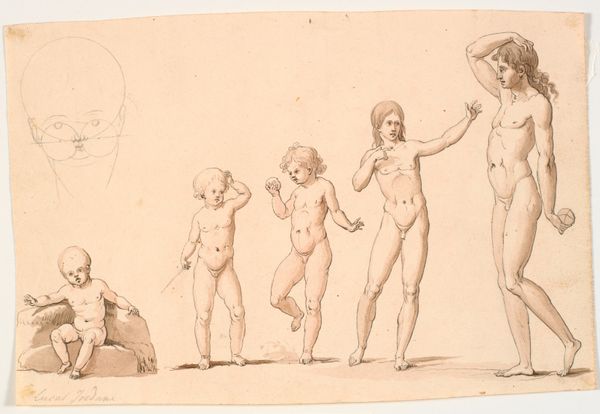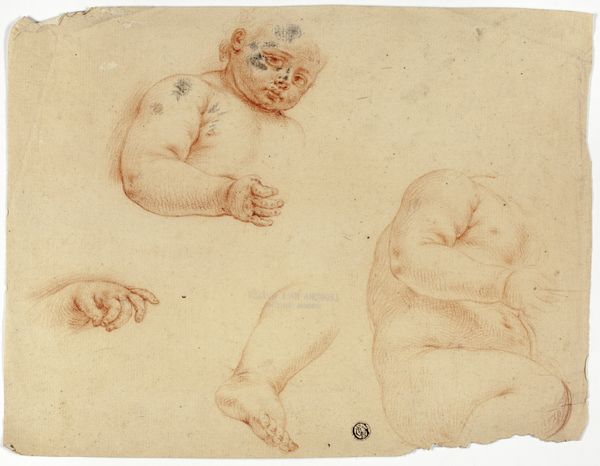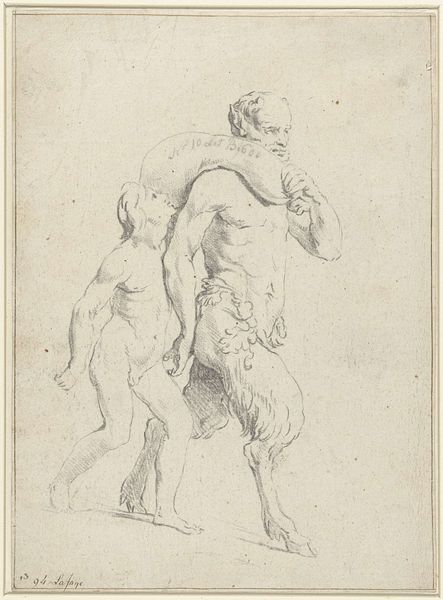
Small boy. Three studies after an antique sculpture; left side view, front view half turned to the left, and front view 1628 - 1630
0:00
0:00
drawing, paper, pencil
#
portrait
#
drawing
#
pencil sketch
#
charcoal drawing
#
figuration
#
paper
#
pencil drawing
#
ink drawing experimentation
#
pencil
#
northern-renaissance
Dimensions: 188 mm (height) x 262 mm (width) (bladmaal)
Curator: Ah, this sketch possesses a certain playful charm, wouldn't you say? Editor: Absolutely! It's got this adorable, slightly chubby innocence about it. What is this, anyway? It reminds me of my own toddler—but far less digitally enhanced. Curator: It's attributed to Willem Panneels, dating from 1628 to 1630. It’s a red and black chalk study titled, "Small boy. Three studies after an antique sculpture; left side view, front view half turned to the left, and front view." Editor: Antique sculpture, you say? Interesting. It almost feels...raw, you know? The simplicity of the lines captures a feeling of purity and even maybe a bit of self-consciousness in the figure, as if he's wondering, "Am I doing this right?" I also note the figure doesn’t have any musculature; instead, it resembles dough made of skin. It makes one want to reach out and touch this baby’s form, this toddler of antiquity. Curator: Indeed. The composition arranges three distinct perspectives of the figure, allowing for comprehensive anatomical observation. Observe the subtle variations in line weight, building depth through careful tonal modulation and delicate hatching. This piece represents not only an exercise in classical imitation but also a profound exploration of the artist’s mark-making practice, wouldn't you say? Editor: Okay, sure. Exploration and observation and mark-making...but beyond the serious artistic scrutiny, don’t you get this overwhelming sense of affection, this… warmth radiating from the paper? It’s just…pure love, immortalized. Plus, let’s be real—that tiny belly button is irresistibly cute. Curator: I appreciate your subjective reading of the piece; yet I perceive Panneels as concerned with mastering established academic methods. It illustrates more about artistic development through technical application than communicating human love. Editor: Maybe so. But, to me, technique and subject often tango; intention informs interpretation, regardless if there were children running underfoot during its making. Still, these small forms linger in your mind as more than studies in Renaissance style. Curator: I concur...ultimately, viewers engage emotionally, interpreting meanings layered deep within lines and shadows. Thank you, that was deeply engaging. Editor: Likewise, a very educational viewing indeed.
Comments
No comments
Be the first to comment and join the conversation on the ultimate creative platform.
